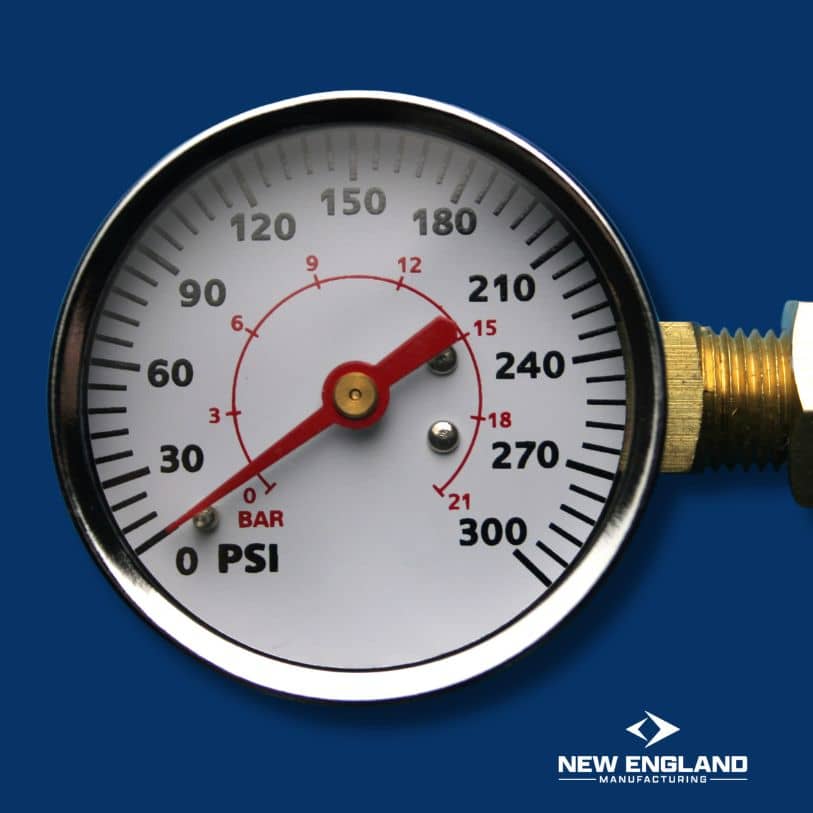Pressure Pointers: Gauge and Absolute Pressure Explained Simply
Oh, the world of pressure. I’m not talking about the kind of pressure you feel when you’re late for a meeting or when your in-laws come for an unexpected visit. No, this is about the invisible force pressing on everything around us: the air pressure.
Ever pumped air into a tire and wondered, “What’s this PSI thing?” or stared blankly at a pressure gauge wondering what it’s trying to tell you? Well, you’re not alone. Dive with us into the easy-to-understand world of absolute and gauge pressure. Let’s make sense of it all without getting our heads in a spin.
What is Pressure Anyway?
So, you’re at the beach, right? You build this awesome sandcastle with towers reaching for the sky and intricate walls. But oh no, here comes your younger sibling, foot poised to smash your architectural marvel. The moment that foot comes down, kaboom! Your sandcastle is history. What just happened? Pressure happened, my friend.
Pressure isn’t just a scientific term for boffins in lab coats; it’s something we experience every day. It’s the force per unit area that turns grapes into grape juice and helps airplanes take off into the blue yonder. It’s all about how much “oomph” is being applied to a specific area. More oomph equals more pressure, less oomph equals less pressure. Simple, right?
Okay, here’s another example. Imagine you’re standing in a pool, and you go deeper and deeper. The pressure on your body increases the deeper you go. Why? Because you have more water above you, adding more weight, pushing down on you. So there you have it, pressure is the invisible yet totally feelable force all around us.
Absolute Pressure: The Complete Picture
Alright, imagine you’re an astronaut floating in the dark, silent vacuum of space. No air, no sound, and definitely no pressure: figuratively and literally. That’s what we call a perfect vacuum, and it’s where absolute pressure starts its count. From absolute zero, nada, zilch.
In the realm of absolute pressure, we don’t play favorites. It includes everything: the pressure inside a tire, a can of soda, or a basketball, PLUS the atmospheric pressure around us. It’s like inviting every person you’ve ever known to a party and counting them all. Some may be fun, some may be awkward, but they’re all part of the experience.
To make it even easier, imagine you’re baking a cake. The flour represents atmospheric pressure, the sugar is the tire pressure, and maybe throw in some cocoa powder for good measure: that can be any other pressure. Mix them all together, and voilà. Your cake mix is the absolute pressure, a blend of all the pressures acting on a system.
Gauge Pressure: A More Selective Viewpoint
Let’s switch gears a bit. You know when you go to a party and you’re just interested in hanging out with your close friends? You focus on them, have inside jokes, and share stories. The other people at the party? They might as well be wallpaper. That’s how gauge pressure operates. It’s not about the whole party; it’s about your circle.
So, if you’ve ever pumped air into a bicycle tire, you’re dealing with gauge pressure. Your tire gauge isn’t telling you the pressure in the grand scheme of the universe. Nah, it’s telling you how much extra air pressure you’ve got compared to the air outside. It’s like checking how much more cake you have compared to your friend. Important stuff!
Why does gauge pressure ignore atmospheric pressure, you ask? Well, in many everyday situations, we don’t really care about atmospheric pressure. It’s like background music at a café.
Sure, it’s there, but you’re more interested in your coffee and conversation. Gauge pressure gives us the numbers we need to make practical decisions, like whether our car tires have enough air to safely get us to that café for our caffeine fix.
Practical Uses: When to Use Which?
Pop quiz. You’ve just been handed a deflated beach ball at a sunny beach party. You’re in charge of getting this party started. Do you A) measure the absolute pressure inside the ball or B) look at the gauge pressure?
Before you break into a sweat, take a breath. We’ve got this. Most times, you’d be rocking the gauge pressure, which in this beach scenario would tell you just how much air you need to puff into that ball to make it the star of the show.
Think of gauge pressure as your practical buddy. It’s all about what you’re adding or subtracting from the norm. It’s the friend who tells you straight whether those jeans fit just right or a tad too tight. Absolute pressure, on the other hand, is the philosophical friend, always looking at the bigger picture, contemplating the universe, and reminding you of everything that makes up your jeans’ snugness.
So, in real-world applications, if you’re tweaking something to fit within our atmospheric norms (like inflating a car tire or measuring blood pressure) gauge pressure has your back. But if you’re studying deep-sea creatures, launching rockets, or getting deep into scientific research, absolute pressure is your trusted guide.
The Relationship: How Absolute and Gauge Pressure Connect
Imagine two sisters. One loves details, the nitty-gritty, the nuances (that’s our gauge pressure). The other is all about the broader perspective, encompassing everything and giving you the lay of the land (yep, you guessed it, that’s absolute pressure). They might approach life differently, but they’re interconnected.
Here’s a secret handshake they share:
Absolute Pressure
=
Gauge Pressure
+
Atmospheric Pressure
Absolute Pressure=Gauge Pressure+Atmospheric Pressure
It’s the golden ticket, the formula that bridges their worlds. Let’s paint a picture. Say you’re going mountain climbing. At the mountain’s base, your water bottle feels a certain way. As you ascend, though, you notice it feels tighter, like it’s about to burst. That’s the gauge pressure in action. But if you were to consider the total pressure inside the bottle from the start of your climb to this very moment, that’s where absolute pressure steps in.
Understanding the connection between the two helps us navigate and interpret a lot of everyday phenomena. From understanding weather patterns to brewing the perfect espresso, this relationship has vast implications.For more details visit us at https://www.nemfg.com/.
Common Misconceptions
Myths and legends aren’t just for ancient cultures and storybooks; they find their way into science too. So, let’s play mythbusters.
First up: “Negative gauge pressure? Oh, that must mean there’s a vacuum inside. Wrong. Negative gauge pressure simply means the system’s pressure is below our atmospheric norm. Think of it like owing someone a few bucks. You’re in the negative with them, but you’re not bankrupt!
Next: “Absolute pressure can totally dip into the negatives” Swing and a miss. Remember, absolute pressure starts from the emptiest of empties—the vacuum of space. The lowest it can go is zero. It’s like trying to take cookies away from an empty cookie jar. There’s just nothing left to take.
Busting these myths helps make sure we’re all on the same page, with our feet firmly grounded in the world of pressure facts.
In Conclusion
We’ve journeyed through the vast world of pressure without breaking a sweat. We’ve tackled the nitty-gritty of both absolute and gauge pressure, discovered their practical uses, and even busted some myths.
So, the next time you find yourself inflating a tire or just pondering about the wonders of pressure, you’ll know the difference. After all, understanding is the first step to mastering. Here’s to many more pressure-filled (or should I say pressure-informed?) days ahead.
Learn More:

Mark R.
With a strong foundation in industrial safety and fire protection systems, Mark R. specializes in creating clear, technical, and compliance-driven content. Writing for SafeTech Reports, he covers topics such as fire hydrant testing, PPE protocols, emergency procedures, and smart technology integration in safety systems. His work ensures that professionals stay informed on the latest regulations, best practices, and emerging trends in safety and infrastructure maintenance.
Get in touch
We usually respond within 24 hours
Need Reliable Water Flow Test Equipment?
For over 70 years, New England Manufacturing has been the trusted source for fire hydrant and water flow testing kits. From pitot gauge kits to custom test kits, we provide precision, durability, and expert calibration to meet your needs.
- Custom-built test kits
- High-quality pressure gauges
- Reliable calibration services


